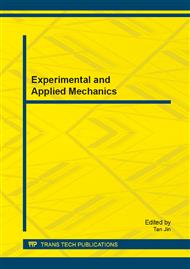[1]
Falcão A F de O. Wave energy utilization: a review of the technologies. Renewable and Sustainable Energy Reviews, 2009, 14: 899-918.
DOI: 10.1016/j.rser.2009.11.003
Google Scholar
[2]
Salter SH. The swinging mace. Proceedings of Workshop Wave Energy R&D, Cork, Ireland, Commission of the European Communities, Report EUR 15079 EN, 1992, 197-206.
Google Scholar
[3]
Caska, A, Finnigan, T, Hydrodynamic characteristics of a cylindrical bottom-pivoted wave energy absorber, Ocean Engineering, 2008, 35: 6-16.
DOI: 10.1016/j.oceaneng.2007.06.006
Google Scholar
[4]
Flocard, F, Finnigan, TD. Laboratory experiments on the power capture of pitching vertical cylinders in waves, Ocean Engineering, 2010, 37(11-12): 989-997.
DOI: 10.1016/j.oceaneng.2010.03.011
Google Scholar
[5]
Whittaker T, Folley M, Nearshore oscillating wave surge converters and the development of Oyster, Philos. Trans. R. Soc. Ser. A, 2012, 370: 345–364.
DOI: 10.1098/rsta.2011.0152
Google Scholar
[6]
Renzi E, Dias F, Hydrodynamics of the oscillating wave surge converter in the open ocean, European Journal of Mechanics B/Fluids 2013, 41: 1-10.
DOI: 10.1016/j.euromechflu.2013.01.007
Google Scholar
[7]
Renzi E, Dias F, Resonant behaviour of an oscillating wave energy converter in a channel, Journal of Fluid Mechanics, 2012, 701: 482-510.
DOI: 10.1017/jfm.2012.194
Google Scholar
[8]
Renzi E, Dias F, Relations for a periodic array of oscillating wave energy converters, Applied Ocean Research, 2013, 39: 31-39.
DOI: 10.1016/j.apor.2012.09.002
Google Scholar
[9]
Renzi E, Abdolali A, Bellotti G, Dias F, Wave-power absorption from a finite array of Oscillating Wave Surge Converters, Renewable Energy, 2014, 63: 55-68.
DOI: 10.1016/j.renene.2013.08.046
Google Scholar
[10]
Henriques, JCC, Lopes, MFP, Lopes, MC, et al. Design and testing of a non-linear power take-off simulator for a bottom-hinged plate wave energy converter, Ocean Engineering, 2011, 38: 1331-1337.
DOI: 10.1016/j.oceaneng.2011.06.003
Google Scholar
[11]
Wang Dongjiao, Hydrodynamic behavior of large moored offshore structures during adverse weather conditions[D], The Hong Kong Polytechnic University, CSE, (1993).
Google Scholar
[12]
Wang Yong-xue, Peng Jing-ping, Sun He-quan et al., Separation of composite waves by an analytical method, The Ocean Engineering. 2003, 21(1): 42-46 (in Chinese).
Google Scholar


